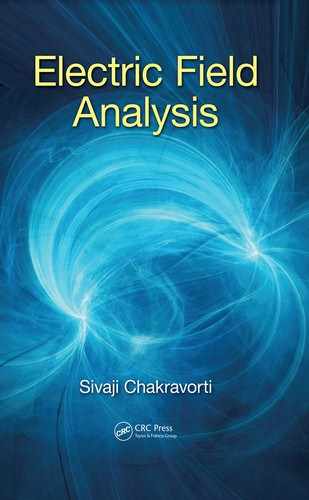Foreword
The knowledge of the physics of electrical discharges and of the electric field distribution are essential design criteria for apparatus applied in physics, medicine and high-voltage engineering. Intensive research work was done particularly in the past, as the support by computers was available. This research work is the subject of numerous articles in scientific journals. For engineers, physicists or students, it is of value that this variety of information is compiled in books by competent scientists experienced in this research field. Dr. Sivaji Chakravorti, professor of electrical engineering at Jadavpur University, Kolkata, India, presents his book Electric Field Analysis giving a deep insight into the subject.
The first part of the book (Chapters 1 through 3) introduces the physical and mathematical fundamentals of electrical fields, with explanations to Gauss’s law and orthogonal coordinate systems. Chapter 4 considers simple single-dielectric configurations, where an analytical mathematical treatment is possible. The subject of Chapter 5 is dielectric polarization. Electrostatic boundary conditions, multi-dielectric configurations and electrostatic pressures on boundary surfaces are treated in Chapters 6 through 8. These more general subjects are concluded by the description of the classical methods of field determination: method of images (Chapter 9) supplemented by the application to the field calculation of a sphere or a cylinder in uniform external fields (Chapter 10), conformal mapping (Chapter 11) and graphical field plotting (Chapter 12).
The subject of the main part of this book is the numerical computation of electrical fields, after an introduction into these techniques (Chapter 13). The finite difference method (Chapter 14), the finite element method (Chapter 15), the charge simulation method (Chapter 16) and the numerical computation by the surface charge simulation method including the indirect boundary element method (Chapter 17) are described and explained. The possibilities of every method are shown by examples taken from engineering practise and suited as benchmark models for validation. In addition, interesting case studies based on own research works are presented (Chapter 18): electrical field distribution in a cable termination, around a post insulator, in a condenser bushing and around a Gas Insulated Substation (GIS) spacer.
The subject matter of the last chapter (Chapter 19) deals with considerations on the application of numerical field calculation for the electric field optimization, limited to a review of published works; the demonstration of contour correction techniques and the application of artificial neural networks for the optimization of electrode and insulator contours.
The author is a fellow of the Indian National Academy of Engineering, a fellow of the National Academy of Sciences India and is a senior member of the IEEE (United States). Recently, he was elected as an honorary ambassador of the Technical University of Munich (Germany). He has published numerous papers in refereed international and Indian scientific journals. His research fields are numerical field computation, condition monitoring of transformers, partial discharge analysis, computer-aided design and optimization of insulation systems, application of artificial intelligence in high-voltage systems and lifelong learning techniques.
This book is a valuable tool for engineers and physicists engaged in the design work of high-voltage insulation systems. It opens a view into the research work done in the past and also into the present state of the art. It is a result of the long-time research work of the author in this field.
Hans Steinbigler
Technical University of Munich
